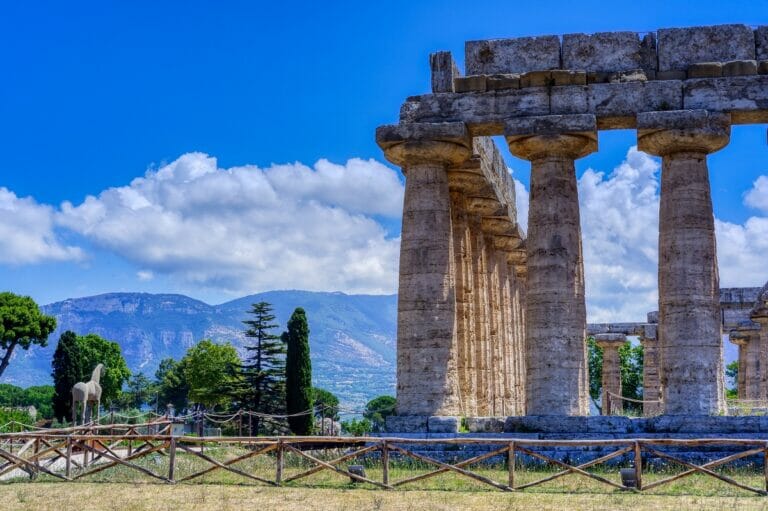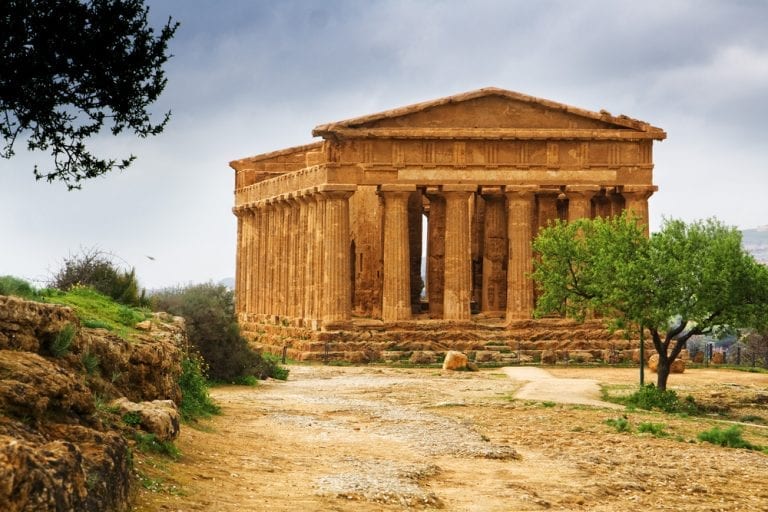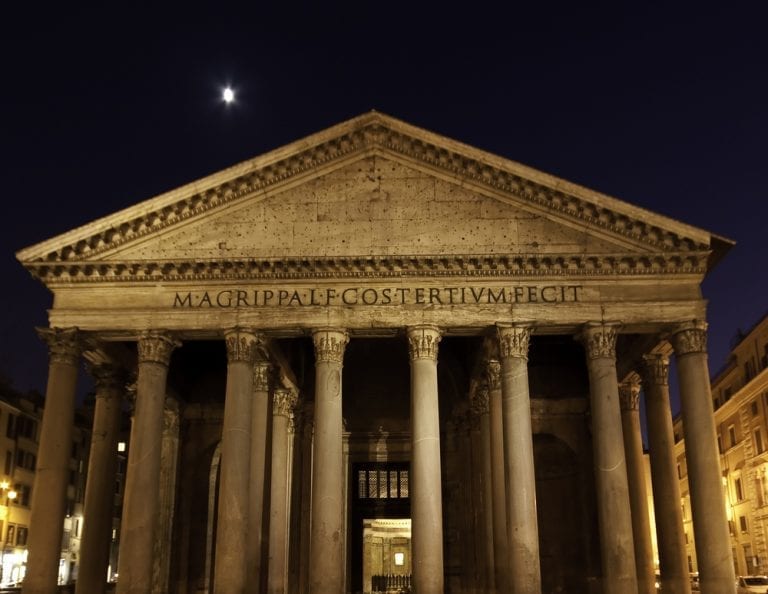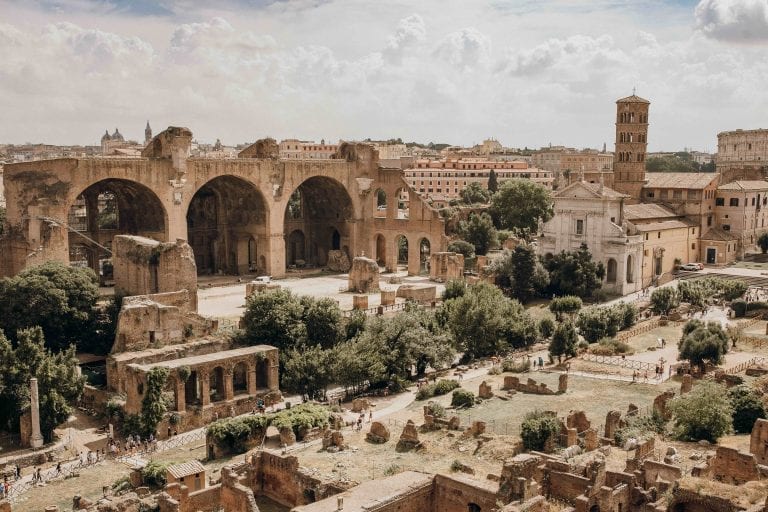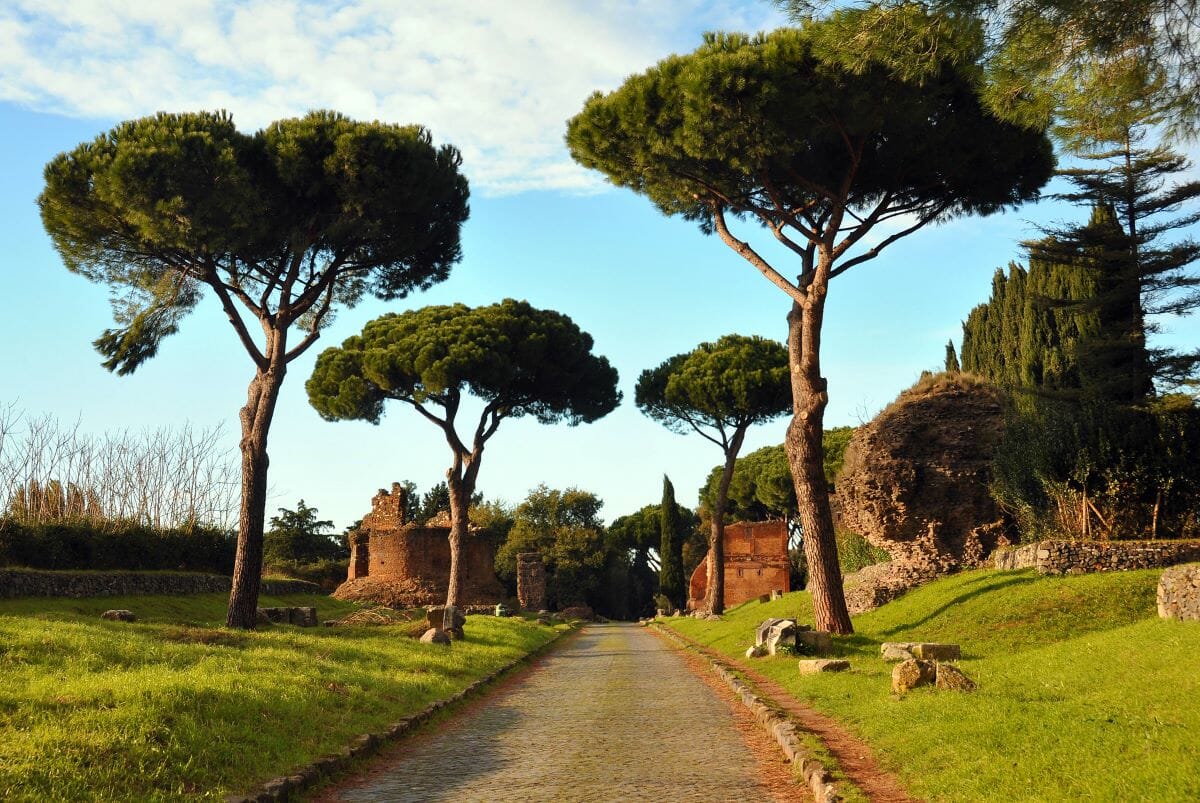
The Appian Way: Uncovering One of the Best Attractions in Rome
September 20, 2023
Did you know that Rome boasts the enduring legacy of one of Europe’s earliest superhighways, still in existence today? Behold The Appian Way, known in Italian as Via Appia Antica.
Arguably the world’s oldest surviving road, The Appian Way was ancient Rome’s vital lifeline, serving as both a military and economic artery. It’s also believed to have played a role in inspiring the famous saying “All roads lead to Rome.”
Today, it’s one of the best attractions in Rome that not only allows you to savor the sunny Roman weather but also transports you back in time.
Come with us as we explore the fascinating Appian Way and discover why it’s a must-visit in your Rome itinerary.
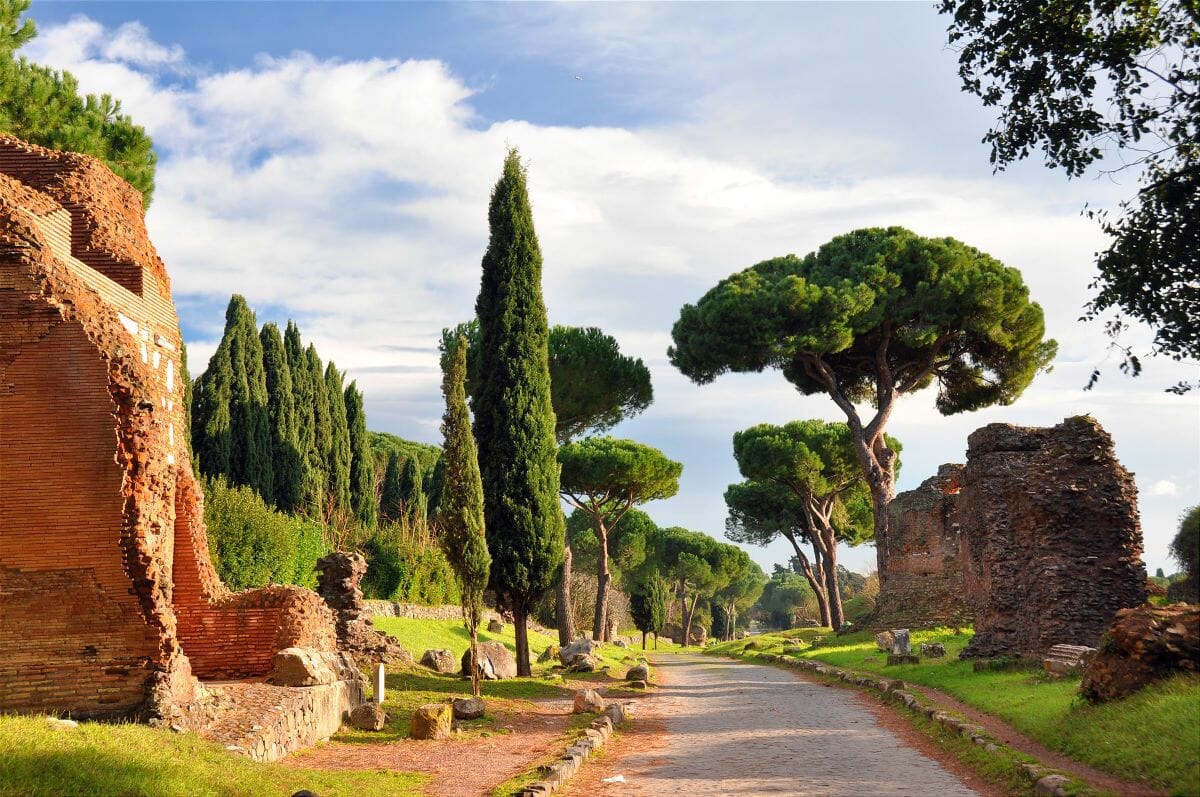
The Appian Way isn’t in center city Rome like some of the other attractions, but it’s certaintly worth a visit. Photo credit: Atilla2008
Table of Contents
ToggleThe Appian Way History
The Appian Way was a crucial road for the Roman Empire. It connected Rome to some of its most distant settlements. Originally built by Appius Claudius Caecus, the then-censor of Rome, the road connected Rome to Capua near Naples.
The road was originally built predominantly for military purposes, meaning Julius Caesar walked it along with thousands of other soldiers, leaders and consuls. Christians converts were buried along the route and the famous slave leader Spartacus was crucified on the via Appia in 71 BC.
Eventually, it extended more than 300 miles to Brindisi, Puglia on the Adriatic Coast, making it the widest and longest road in existence at the time. Called the “Queen of Roads,” its construction was truly momentous, especially considering it was built in 312 BC.
Even compared to many of the other best attractions in Rome, The Appian Way is incredibly well-preserved. It’s made of large, flat stones, which have been firmly set in place by thousands of years of rain, wheels, and feet passing over them. When you touch them, you are walking in the footsteps of Roman emperors, merchants, saints and maybe even St. Peter.
The initial ten miles of the Appian Way, renowned for their historical significance and scenic beauty, have been incorporated into a regional park called Parco dell’Appia Antica, ensuring the preservation and protection of the road and its encompassing monuments.
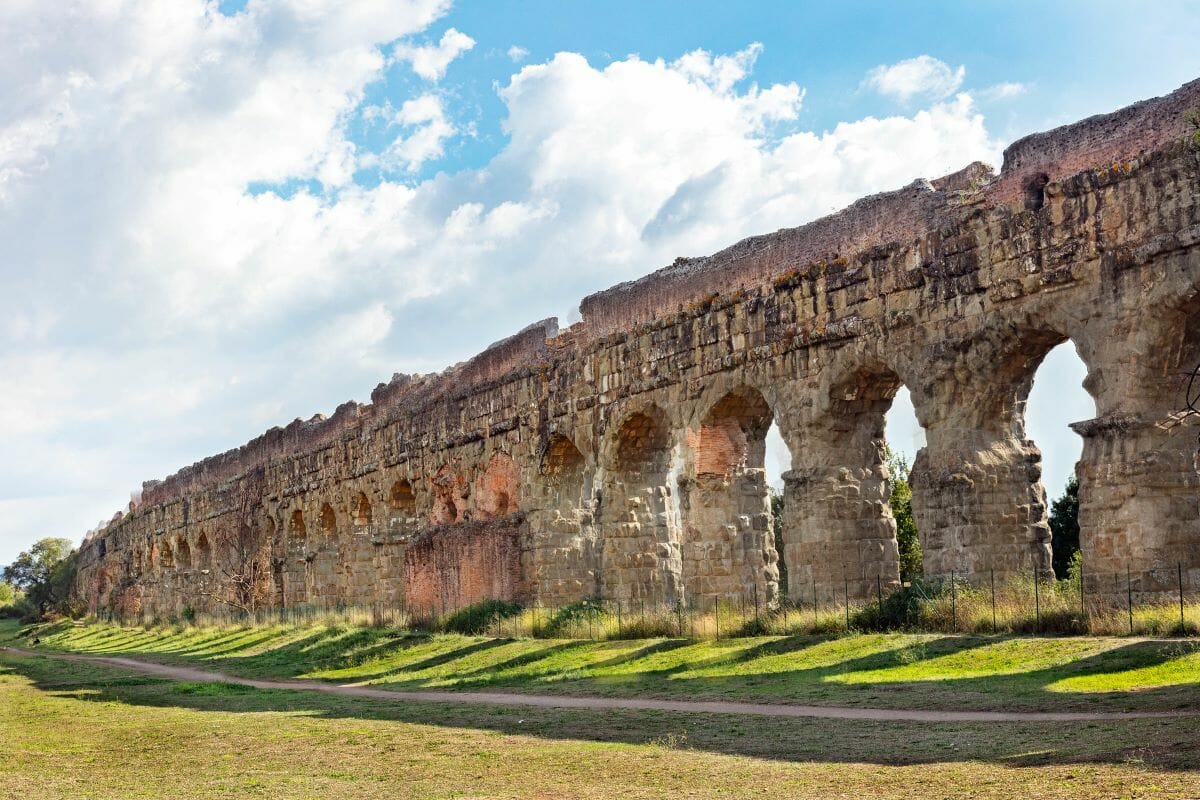
To the southeast of Rome, lies the Parco degli Acquedotti, an integral part of the larger Appian Way Regional Park. Photo credit: Paul VanDerWerf
Where is The Appian Way?
Although it’s one of the best attractions in Rome, much of the Appian way sits outside the city. So, you could consider it as a fun addition to the list of unusual things to do in Rome.
The road begins at the southeastern edge of Rome and extends southward, passing through the countryside of the Roman Campagna. It goes all the way to Albano Laziale, about 16 kilometers (10 miles) from Rome’s city center, and continues south, linking towns and archaeological sites.
Don’t stress about it not being right in the city center. With a bit of planning and some patience for Rome’s public transportation system, you can easily find your way to The Appian Way.
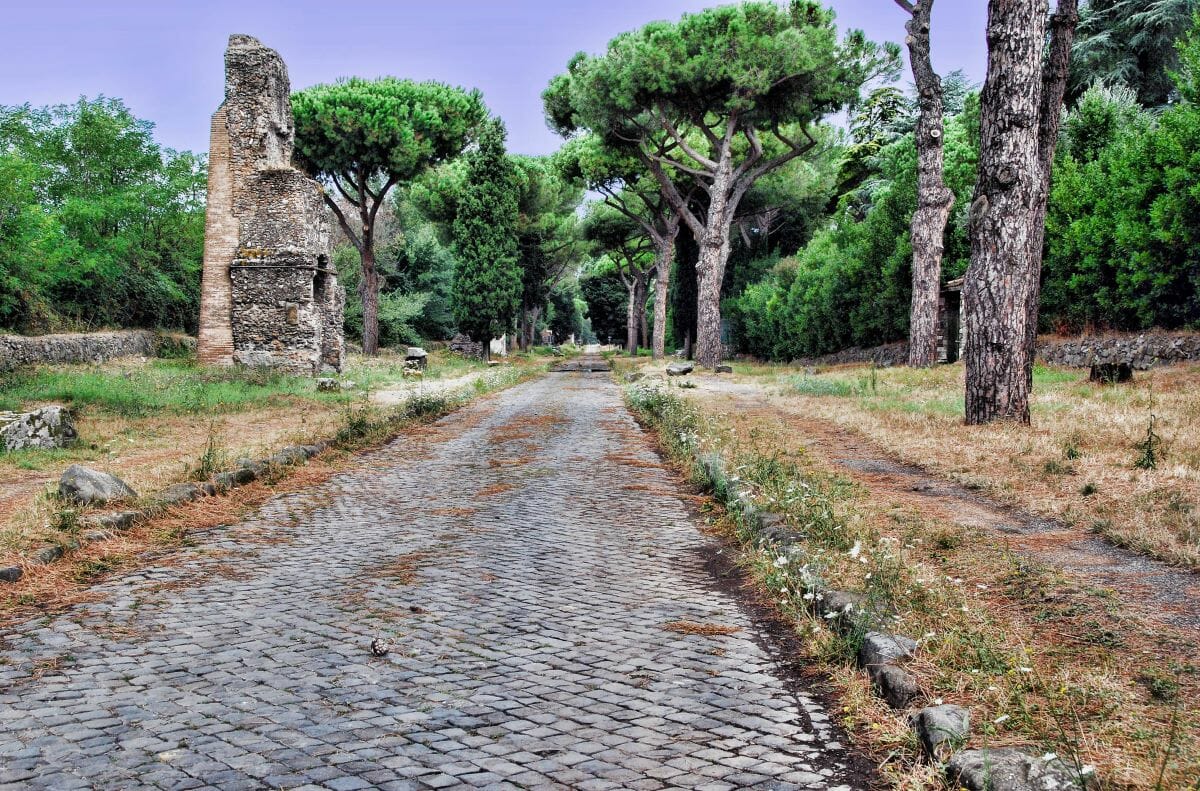
The Appian Way is believed to have played a role in inspiring the famous saying “All roads lead to Rome.” Photo credit: Trish Hartmann
How do you get to The Appian Way?
The easiest ways to get to The Appian Way are by public transportation or a taxi (or Uber).
Depending on the bus you take, the stop may vary slightly, but it won’t be far from the park’s entrance. Feel free to check with the driver or use your phone’s map for confirmation.
- Metro & bus:
- Option 1: Take the metro to the Circo Massimo stop then catch the 118 bus
- Option 2: Take the metro to the San Giovanni stop and then transfer to the 118, 218, 660 or 663 bus
- Taxi: You can go by taxi for a more direct route, but be careful about coming back as many of the cars waiting around aren’t official taxis, so it’s best to set a price before getting inside to avoid getting scammed.
The entire park is traffic-free on Sundays, making it an ideal day for a visit. On this way of the week, you’ll find Romans picnicking and riding bikes, while tourists explore the monuments, catacombs, and nearby cafes. It’s the best time for cycling, strolling and otherwise exploring as other days of the week tend to see heavy traffic congestion.
However, be aware that there are fewer buses operating on Sundays, so plan your trip accordingly!

When in Rome. Photo credit: Dario De Medici
What’s there to see on The Appian Way?
Today’s Via Appia Antica starts at the Porta San Sebastiano, just two miles south of The Colosseum.
From Porta San Sebastiano, head down the road to the 9th century Domine Quo Vadis Church. Legend has it that this is the spot where Peter saw a vision of Christ when he was fleeing Nero’s persecution in 64 AD. He asked Christ, “Domine, quo vadis?” or “Lord, where are you going?” Jesus responded that he was going to Rome to be crucified anew, prompting Peter to accept his fate and return to Rome to become a martyr. Inside the church is the stone that supposedly has the footprints of Jesus. There’s also a fresco of Peter on the left wall and one of Jesus on the right.
Two major Christian catacombs are located directly after the church: The Catacombs of San Sebastiano and the slightly larger Catacombs of San Callisto. They’re the burial sites for many of the early popes and some of the best attractions in Rome in their own right.
Nearby there’s also the enormous tomb of Cecilia Metella, the daughter-in-law of Rome’s richest man. Although this tomb doesn’t show up on many normal tours, it’s definitely one of the best attractions in Rome (or just outside of it). A little ways past Cecilia’s mausoleum is the Circus Maxentius, one of the best-preserved Roman imperial circuses. It’s a large arena where chariot races were once held, right next to the remains of Emperor Maxentius’ large villa.
From here you can walk or bike for miles along the ancient Roman highway, passing gorgeous fields strewn with historic tombs and ancient Roman ruins, all nearly unchanged since the 4th century.
Though eventually about 30 other roads fanned out from Rome (truly giving meaning to the saying “all roads lead to Rome”) the Ancient Appian Way was the first and greatest, another surviving testament to the mighty Roman Empire.
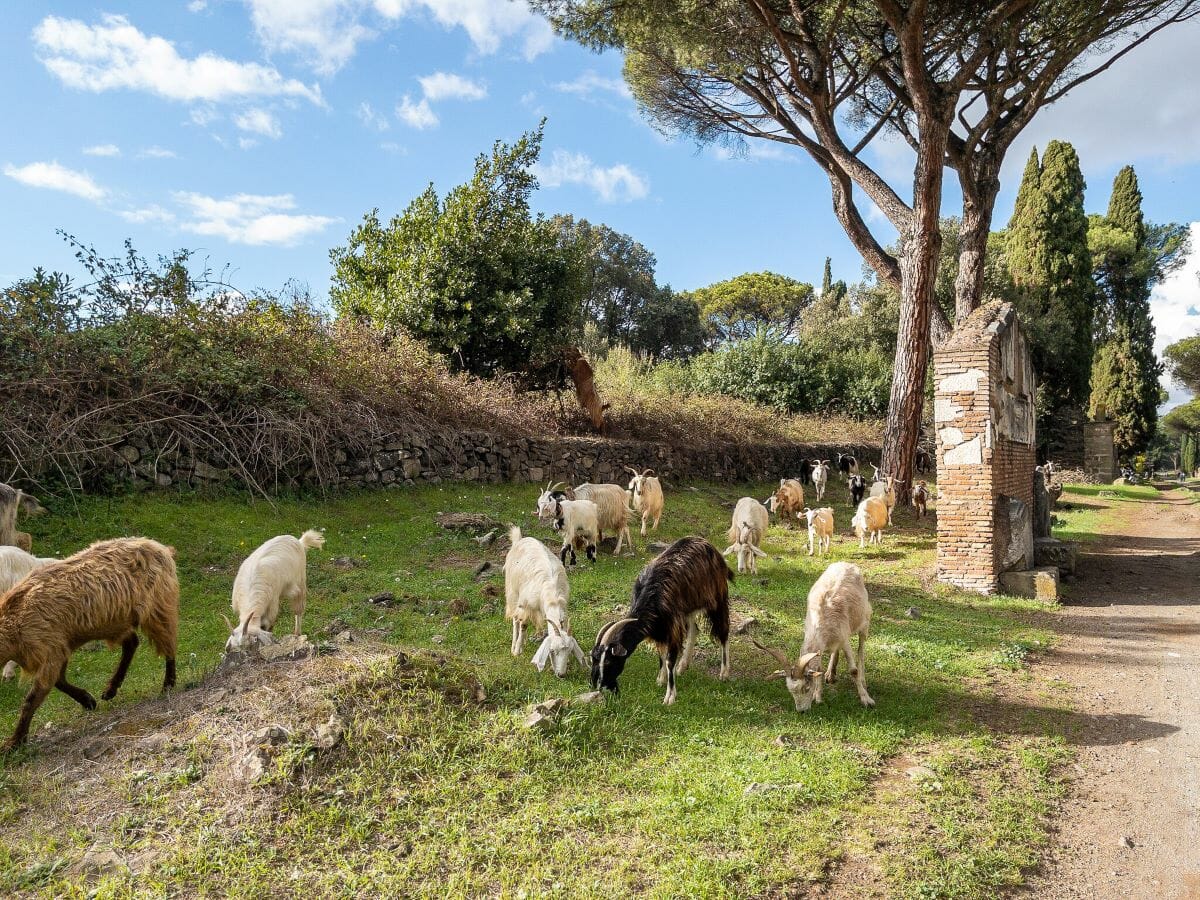
While visiting The Appian Way, you might encounter some local wildlife. Photo credit: Kent Wang
Update notice: This post was updated on September 18, 2023.
If you’d like an expert to guide you through Rome’s most awe-inspiring ancient sites, join us on our Hidden Gems & Ancient Wonders: Rome Driving Tour with Aqueducts & Jewish Ghetto tour. Here, you can discover these extraordinary landmarks in utmost comfort, all while enjoying the convenience of private transportation. Whether you’re a seasoned explorer of the city or embarking on your first trip to Rome, the journey awaits!
by Gina Mussio
View more by Gina ›Book a Tour

Pristine Sistine - The Chapel at its Best
€89
1794 reviews

Premium Colosseum Tour with Roman Forum Palatine Hill
€56
850 reviews

Pasta-Making Class: Cook, Dine Drink Wine with a Local Chef
€64
121 reviews

Crypts, Bones Catacombs: Underground Tour of Rome
€69
401 reviews

VIP Doge's Palace Secret Passages Tour
€79
18 reviews

Legendary Venice: St. Mark's Basilica, Terrace Doge's Palace
€69
286 reviews









